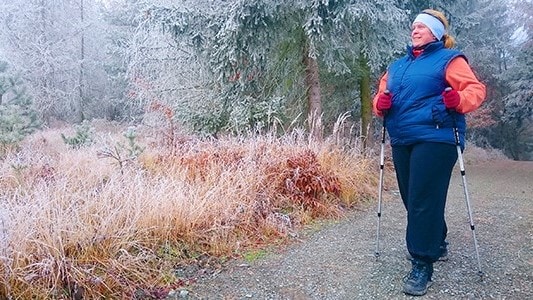Key points
- Regular physical activity is one of the most important things you can do for your health.
- As you think about ways to be more active, use these tips to get started and overcome obstacles.

Getting started
Regular physical activity is one of the most important things you can do for your health. Immediate benefits include better sleep, reduced anxiety, and lower blood pressure. Regular physical activity also helps lower your chances of getting many chronic diseases. These include heart disease, type 2 diabetes, and some cancers.
People with chronic conditions may want to talk to their health care provider about the right types and amounts of physical activity.
Here are ways to get started:
Federal guidelines for adults recommend at least 150 minutes of moderate-intensity physical activity a week. You might split that into 22 minutes a day or 30 minutes a day for 5 days. You can use any combination that fits your schedule.
Reduce time sitting and increase time moving. For example, make it a tradition to walk before or after dinner.
Set aside specific times in your routine to be physically active. This diary might help.
Start with activities, locations, and times you enjoy. For example, you might like morning walks in your neighborhood. Others might prefer an online physical activity class after work.
Try activities with others for motivation and mutual encouragement.
Start slowly and work your way up to more time or more challenging activities.
Use free apps and websites to find fun ways to be physically active or new places to put some variety in your activity routine.
Try walking
For many people, walking is a great way to become more physically active. See:
Ways to overcome obstacles
I don’t have time.
I don't want to do this alone.
I’m too tired.
I have so much to do already.
I’ll probably hurt myself.
I’m not coordinated.
I can’t learn something new.
My job requires me to travel.
I'm busy with young children.
Resources
Similar content in Spanish.
More information on Overcoming Barriers to Physical Activity.
Sign up for Active People, Healthy NationSM and become part of a nationwide initiative to help 27 million Americans become more physically active.
